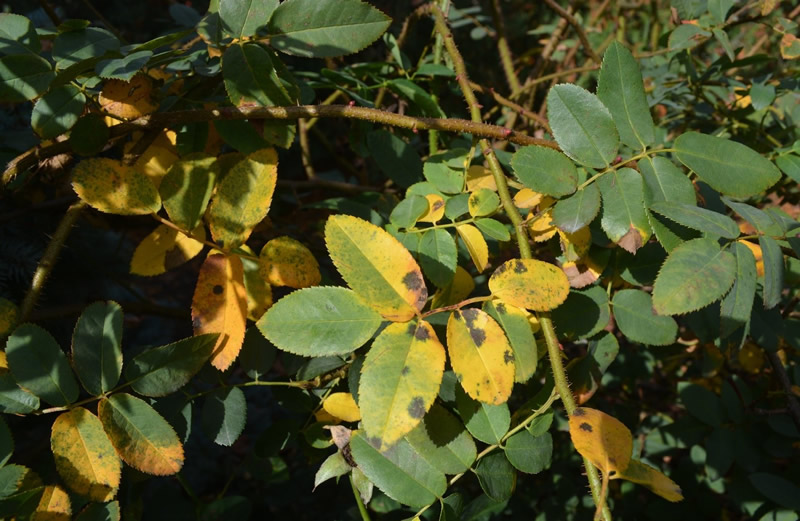Issue 13, October 22, 2020
Black Spot of Rose
Black spot is a common fungal disease that causes significant defoliation of rose. Severe and repeated defoliations weaken the plant, reducing flowering and increasing susceptibility to winter injury and decline from other diseases.
The disease is appropriately named for its symptoms, which predominantly appear on the upper leaf surface as black spots with fringed margins. Spotted leaves turn yellow, except for the black spots, and drop from the plant. Similar symptoms occur on petioles and fruit. Canes may become infected during the first year of development. Cane lesions are purplish red, then black, and slightly raised.

The fungal pathogenoverwinters on rose canes and fallen leaves. Primary infections occur as spores splash onto new leaves in the spring. Many secondary cycles follow, with a peak in late summer. Wet leaf surfaces, high humidity, and warm temperatures promote the disease.
Black spot resistance is available in various rose cultivars. In large rose plantings where susceptible varieties must be grown, it helps to plant a mix of susceptible and resistant cultivars. Reduce disease severity by promoting the rapid drying of foliage. Plant roses in open sunny locations with adequate spacing to increase airflow. Rake and remove fallen infected leaves and other inoculum sources this fall or before growth resumes next spring. Fungicides can be used to control this disease, but multiple preventive applications are required, beginning as new leaves appear and repeating well into the fall on highly susceptible varieties. Lengthen spray intervals or skip sprays altogether during dry weather
Author:
Travis Cleveland